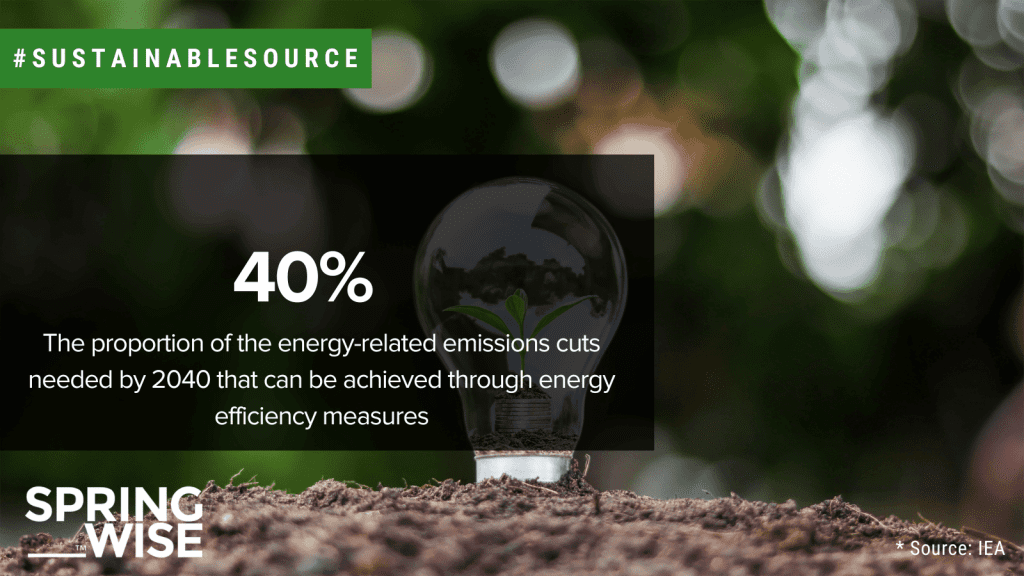The third Monday of January is considered by some to be the most depressing day of the year. And, although the concept of ‘Blue Monday’ is a marketeer’s invention, energy consumers in Europe will certainly have been feeling glum in the face of a challenging outlook for energy prices.
The current energy crisis has heightened awareness of energy consumption and the need for improvements in energy efficiency. And this has translated into government action to slash energy demand in the short term. The EU, for example, has introduced voluntary measures to cut overall electricity use by 10 per cent in the EU by the end of March 2023, with obligatory reductions of 5 per cent during peak hours.
Longer-term energy efficiency improvements are also on the agenda. The UK plans to cut its energy usage by 15 per cent by 2030. And the European Commission plans to increase the EU’s binding target for energy efficiency improvements by 2030 from 9 per cent to 13 per cent (compared to a 2020 baseline). Some groups in the European Parliament want to increase it even further to 14.5 per cent.
Looking globally, the International Energy Agency (IEA) highlights that that Government ambition on efficiency has grown in 2022, with global investments in energy efficiency increasing by 16 per cent compared to 2021. And, while the energy crisis has been felt most acutely in Europe, energy efficiency affects the whole world. According to the IEA’s Sustainable Development Scenario, energy efficiency represents more than 40 per cent of the emissions abatement needed by 2040.
Efficiency gains in industry will play an important role in reducing emissions. But innovation is also needed to deliver energy savings in the home. Read on to discover some of the most exciting solutions that are making our homes consume energy more efficiently.

Heating and cooling
In the US, heating and cooling rooms accounts for 38 per cent of domestic greenhouse gas emissions. Finding more efficient ways to manage the temperature of our homes is therefore an important area for innovation. One solution is better insulation, and, in the UK, the issue has become so charged that it has spawned Insulate Britain, a group demanding that the Government insulate all social housing by 2025.
And while fresh research has cast doubt on the long-term effectiveness of insulation for reducing natural gas consumption, new materials that reduce reliance on energy-guzzling heating and cooling systems have been an important area of development. Swiss-Belgian startup Gramitherm, for example, makes bio-based carbon negative insulation out of grass, and engineers from Germany and China have developed a new wood-based cooling foam that could reduce the cooling needs of a building by a third.
Another approach is to make temperature management systems themselves more efficient. And in the US, a startup called Carbon Reform has developed a process to retrofit traditional HVAC systems to work more efficiently.

Energy monitoring
In order to implement energy efficiency measures, consumers need to be able to monitor their consumption. Smart meters – devices that track price and consumption data and provide automatic meter readings – have become increasingly popular in recent years. And Springwise has spotted ‘bridge’ devices that connect hard-to-reach areas with smart meter infrastructure. But beyond smart meters, Springwise has spotted a range of other solutions for tracking and acting on energy usage data.
UK startup measurable.energy has developed smart socket technology for commercial use that can safely monitor the electricity use of each socket, helping organisations save energy and money. And in Tunisia, a startup called Wattnow has developed an AI-powered system that tracks energy usage in a building. Through a dashboard accessible via both mobile and desktop, the system identifies ways to consume energy more efficiently and sends early alerts when maintenance is needed. The AI also puts together predictions for future use patterns.
Making the most of government incentives
In both the UK and US, government initiatives are encouraging the adoption of energy efficient practices. And innovators are on hand to help consumers make the most of them.
In the UK, grants are available to help retrofit the least energy-efficient homes to make them greener. But funding for the scheme is not open-ended meaning that the grants need to be targeted where they can make the most difference. To help with this, UrbanTide has developed artificial intelligence-based software that identifies homes and areas with the poorest energy efficiency. It does this by combining anonymised smart meter data with other data streams to produce detailed fuel poverty risk maps.
Meanwhile, in the US, Elephant Energy is helping homeowners electrify their properties to benefit from rebates introduced by the recent Inflation Reduction Act. The company develops customer-tailored electrification plans incorporating measures such as the installation of heat pumps, hybrid water heaters, EV chargers, and induction hobs.
Sign-up to our Sustainable Source newsletter for bi-weekly updates on the green innovations that matter.

